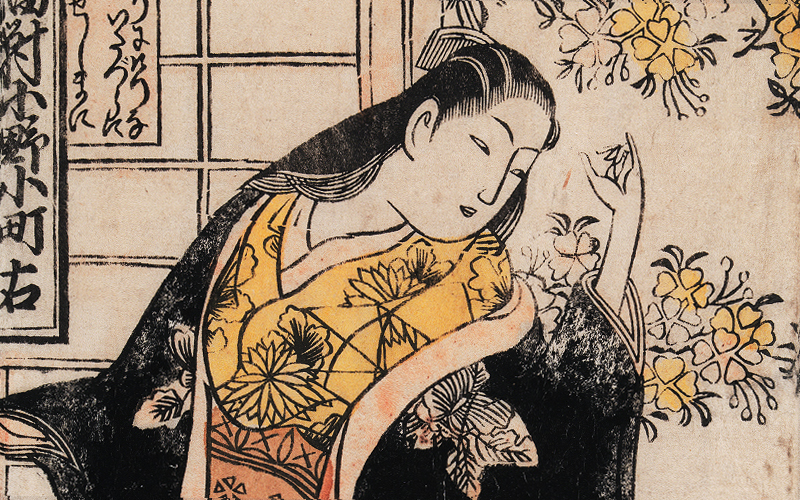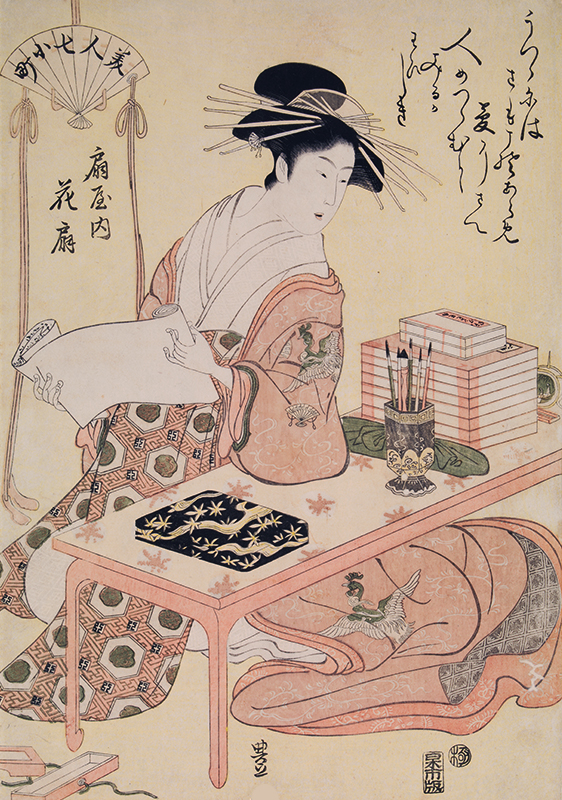Ono no Komachi

Ono no Komachi was one of the most well-known and respected Japanese poets. Her favoured theme was love and her decidedly melancholic poems tell stories of passion and heartbreak.
Komachi is the only woman to be mentioned in the Kokin Wakashū (usually abbreviated to Kokinshū), an ancient anthology of Japanese tanka or waka poetry created by the Emperor Uda and published on the orders of his son in approximately 905. The six poets referred to in the anthology became known as Rokkasen, or six immortal poets; Komachi is also included in the Sanjūrokkasen [36 immortal poets] and Nyōbōsanjūrokkasen groups [36 immortal poetesses].
Although the poet’s exact dates of birth and death have never been confirmed, the preface to the Kokinshū notes that she lived ‘recently’, allowing her to be situated in the 9th century, during the Heian period (794–1185). It is believed that she was born in Akita province and that, at just 13 years of age, she was sent to serve the imperial court in Kyoto.
The uncertainty surrounding her identity led to the emergence of several legends about her, rendering her still more famous in Japan. Although little is known about her life, Komachi was widely described as remarkably beautiful; her name was thus given to a beauty contest and she was portrayed in several Noh theatre plays, a classic form of dance-drama which emerged in the 14th century. More recently, she inspired a manga, which was later adapted into an anime.


Over time, the poet also inspired a number of prints, several of which belong to the collections of major international museums such as the British Museum in London, the Museum of Fine Arts in Boston and the Metropolitan Museum of Art in New York. In the early 20th century, Calouste Gulbenkian purchased three works depicting Komachi, enriching the Japanese art section of his collection.
It is not known what happened to Komachi at the end of her life, nor where she is buried. However, her importance in Japanese culture is demonstrated by the presence of a number of tombs paying tribute to her across Japan.
A Collection of Stories
On a weekly basis, we shared a story around Calouste Gulbenkian’s collection. This section was created in 2020, which is why the articles refer to the Calouste Gulbenkian Museum collection as the Founder’s Collection.
Other stories